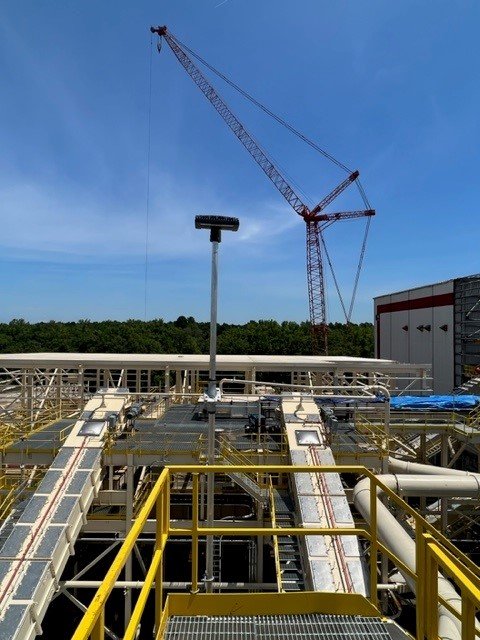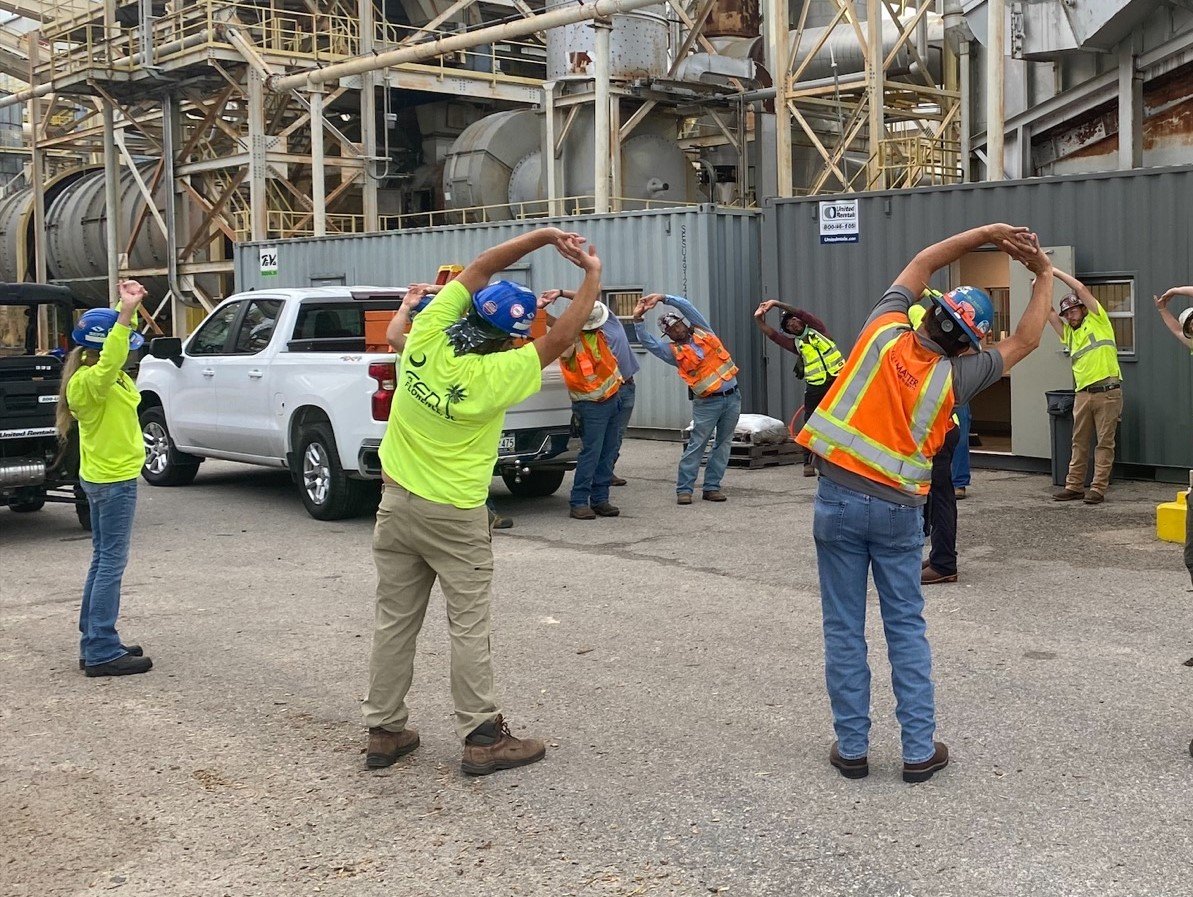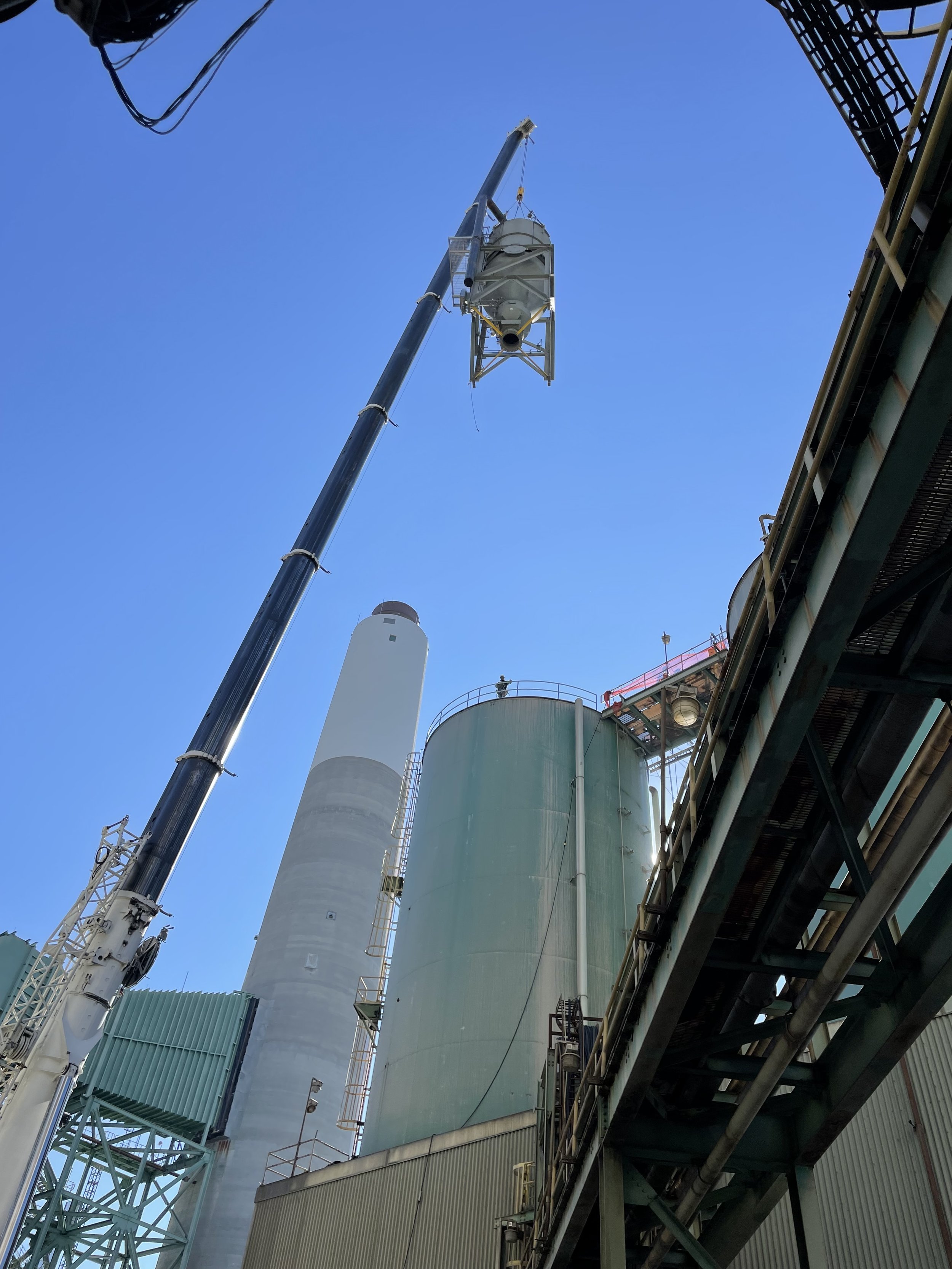We strive to be a valued resource.
From field work to fabrication, this newsletter provides information about our processes, services, and projects, as well as safety tips for our industry.
Managing complex construction projects is not a simple job. It takes a team of professionals with specific skills to execute a project successfully. Having an Integrated Project Controls System is a crucial component of a successful project.
Industrial Solutions began work on a very large, nearly 3 million dollar electrical and Instrumentation project for a national wood and forest products company at the beginning of the year and we are scheduled to complete the project in mid-August.
Those working in construction and other industrial jobs outside have to take extra precautions during excessive heat. Outdoor workers are among the most vulnerable to heat-related illnesses.
Stretch-and-flex programs can help reduce sprains, strains, back pain, and other potential injuries. It’s a quick and easy way to help protect workers from injury.
Whether working on a construction site or working at home, safety gloves are one of the most important types of PPE to protect hands.
SEFA has a long history of experience with ash handling systems and a breadth of skills for the installation or conversion of handling systems.
While dropped objects should fall vertically, dropped objects can strike equipment during the fall and be deflected toward individuals not directly under the overhead work.
At SEFA Industrial Solutions, our Business Development team is committed to facilitating win-win solutions, building long-term relationships, and focusing on continuous improvement.
Today, it is more common to have three or four materials in a single system. An improved understanding of metallurgy makes this possible.
This overview highlights the techniques, tools, and teamwork for making sure an industrial cable pull goes smoothly.
By involving a knowledgeable contractor early during concept and design, owners and engineering firms can have the benefit of additional input for assessing facility downtime and project installation costs.
Effective Document Control practices are about quality and consistency, ensuring that customer requirements are taken care of and that critical steps are not missed.
Supply chain challenges and labor shortages affect outages in the form of delays, costs, or simply being able to complete the intended work scope. Learn the steps we take to manage these variables.
Given the variety of equipment and voltage levels required for industrial electrical systems, this summary describes what to expect in terms of testing and documentation.
An Inspection & Test Plan is a Quality roadmap for any fabrication or field project, breaking down a complex project into manageable portions from start to finish.
A number of conditions can make a lift “critical,” such as tight site constraints, people working in lifts next to a suspended load, or awkward loads that might shift during rigging. Lift plans include details for the crane operation sequence and a plan for job safety.
In the event of a power loss, backup power systems provide a secondary source of power so that important processes and systems remain operational. Backup power systems are categorized as “Emergency,” “Required Standby,” and “Not Required Standby.” The nature of the industrial, manufacturing, or utility process determines which type or types are necessary.
Understanding process piping codes and standards is critical to verify that final parts and assemblies match specifications in an engineering design. Many organizations provide or contribute to the development of codes and standards.
SEFA’s Quality Control System includes verifying parts and assemblies on customer projects. The process is vital to ensure the accuracy of parts and assemblies, which is as much about the paperwork as the parts, both of which are tracked and documented throughout a project to make sure customer designs and specifications match final construction.
In industrial environments where processes require high energy demands, the risk of arc flash is of particular concern to electrical contractors, as the hazards of electrical work can be deadly. Project planning, employee training, use of appropriate personal protective equipment (PPE), warning labels, and lockout/tagout procedures are all important in preventing injury.
For accurate and quality fabrication of process piping, our team often works with customers to facilitate the development of piping isometrics. Piping isometrics are three-dimensional drawings of pipe spools and can be created from engineering piping and instrumentation diagrams.
With recent breakdowns in supply chains, the job of finding replacement parts for equipment has become challenging. No longer stocked “on the shelf” and shipped in days, parts can be more expensive and can take weeks or months to arrive. Consider working with a fabricator who has the material knowledge and in-house design expertise to design and produce your ideal replacement parts, resulting in meaningful value for your operations.
Preparing for an unexpected can help ease the burden a possible disaster can bring to you and your family.
For industrial companies that process abrasive materials, protecting equipment from wear is an ongoing challenge. Wear Solutions is a specialized branch of fabrication having to do with the selection and installation of material linings for specific applications.
Continuous emission monitoring systems (CEMS) measure and monitor waste gases and particulates in a plant’s emissions system. As pollution monitoring devices, CEMS help companies operate a successful facility and comply with state and federal regulations to protect air quality.
Today’s next-generation plasma cutting technology is automated and controlled, cost-efficient, precise, and (finally!) delivers edges that require little to no finishing work. Robust software and hardware set optimum cutting parameters based on material type and thickness.
When it comes to maximizing productivity and prolonging the life cycle of a manufacturing process, updating mechanical components is only half the equation. Updating the control system is just as valuable. Not only can control systems extend process life, but they can even improve reliability.
Safety, schedule, quality, and budget. The success of a construction project rides heavily on managing these four variables. When one changes, so will others. With multiple projects and constant change, contractors demonstrate a commitment to project success by fostering a project management culture.































